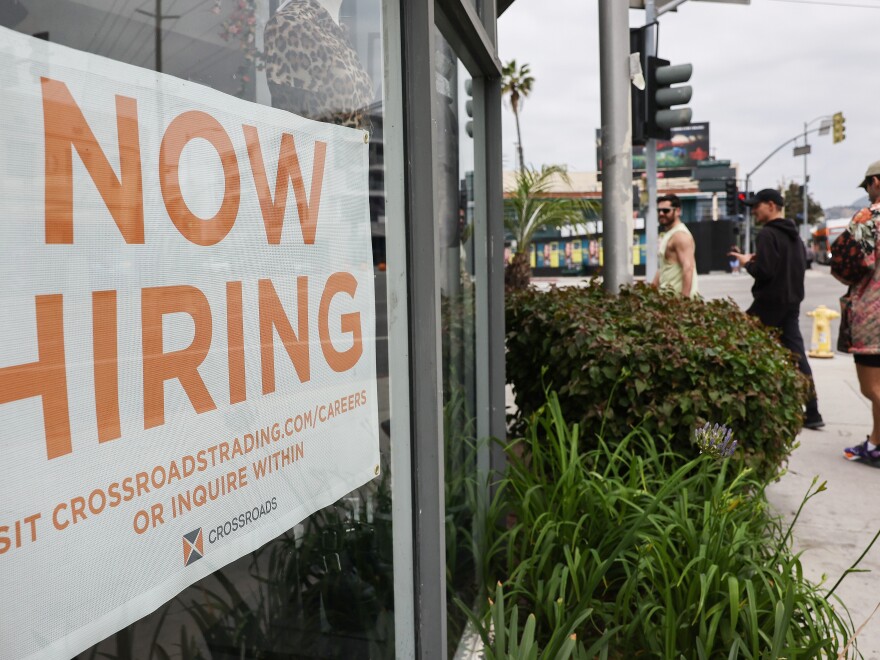Updated @ 6:10 PM EDT on August 1, 2025
President Trump’s tariffs started to take effect in late spring and early summer, which caused the job market to deteriorate significantly. In response, Trump demanded that a senior labor statistician be fired.
According to a Labor Department report released Friday, companies in the United States created just 73,000 new jobs in July, while job gains from May and June were largely erased. The jobless rate increased marginally to 4.2%.
Trump made unfounded statements regarding the employment figures on social media hours after the data was released, claiming that they “were RIGGED in order to make the Republicans, and ME, look bad.”
The chief of the Bureau of Labor Statistics, which releases the jobs data, Erika McEntarfer, was fired by Trump, according to another post. Former President Joe Biden named McEntarfer to the position.
“She will be replaced with someone much more competent and qualified,” Trump stated. “Important numbers like this must be fair and accurate, they can’t be manipulated for political purposes.”
Since the Trump administration has been cutting funding and employment for statistical agencies, data specialists have expressed worries about the quality of U.S. government statistics.
Early 2028 was the anticipated end date of McEntarfer’s tenure at the Bureau of Labor Statistics. However, according to federal law, presidents have the authority to fire labor statistics commissioners before the end of their four-year tenure.
It’s loading…
Tariff uncertainty hits manufacturing
The jobs data was released the day after President Trump declared fresh tariffs on a number of nations.
One of the few industries with strong job growth last month was the health care industry.
However, since the start of the year, the federal government has laid off some 84,000 employees, including 12,000 in July. Despite taking buyouts, tens of thousands of more government employees are still classified as employed through the end of September.
In July, 11,000 jobs were lost by factories. The president’s trade policies are intended to benefit domestic manufacturers. However, manufacturing managers lament that orders and other activity have decreased due to uncertainties around import duties. Since April, the federal government has imposed a 10% tax on almost all imports into the United States, and next week, many commodities will be subject to increased tariffs.
As stated in a study published Friday by the Institute for Supply Management, “these tariff wars are beginning to wear us out,” according to one anonymous manufacturing manager. “The future is completely unclear, and the past few months have been challenging as we’ve tried to determine where everything is headed and how it would affect our company. Significant and unforeseen expenses have been incurred thus far.
Almost 40,000 people left the labor in July, although the unemployment rate increased. Over the past year, the percentage of adults who are employed or seeking employment has decreased by 0.5 percent.
Employers may find it more difficult to fill open positions as a result of the even more precipitous decline in the proportion of immigrants in the workforce.
“I think it’s mostly a labor supply story,” says Peterson Institute for International Economics senior scholar Jed Kolko. “When you look sector by sector, the big slowdown in employment this year is in, first of all federal government employment, of course, but also in some sectors that are particularly reliant on immigrants such as construction, home health aides and accommodation and hospitality.”
Wages are still rising even as hiring is slowing down. In July, average pay increased 3.9% over the previous year, which is probably more than enough to beat inflation.
It’s loading…
Data will likely add pressure on the Fed
At the Federal Reserve’s next policy meeting in September, the labor market’s deterioration is probably going to intensify calls for interest rate cuts. Earlier this week, the central bank kept rates unchanged due to concerns that rising tariffs will further push prices higher.
Trump has frequently criticized Jerome Powell and the Fed for delaying interest rate cuts. However, he will soon have the chance to add a new member to the Fed’s seven-member board of directors. Six months before her term was about to end, Adriana Kugler, who has been the Fed governor for less than two years, revealed she will be leaving her position next week.
The Fed announced that Kugler, a labor economist, was leaving his position to become a professor at Georgetown University again this autumn.
Hansi Lo Wang of NPR provided reporting assistance.
Copyright 2025 NPR






